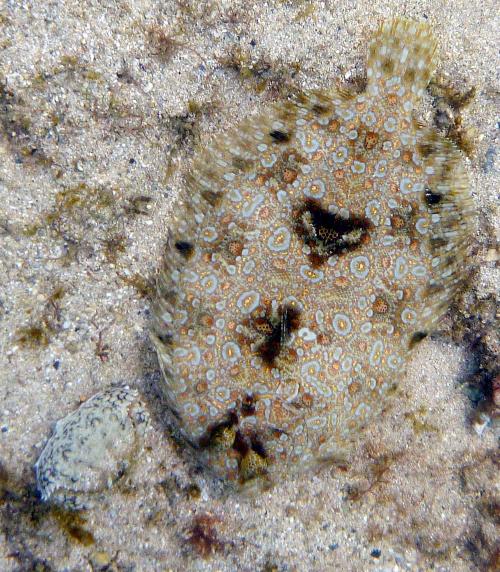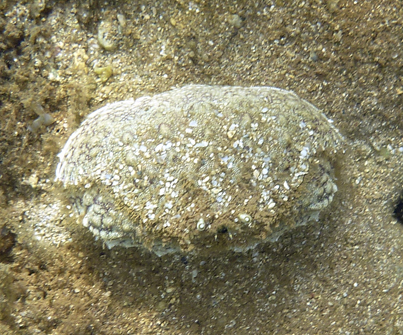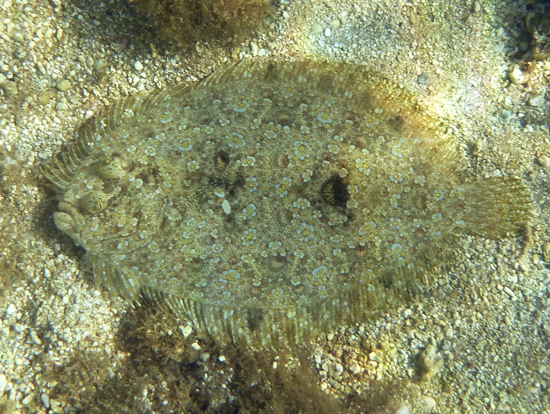Published in the Ocean Watch column, Honolulu Star-Advertiser © Susan Scott
January 7, 2013
That’s what I wondered last week as I watched a flowery flounder stalk a box crab. I wanted to tell the fantastic flatfish, so colorful that “peacock” is its other name, “Don’t do it! That crab is packing!”
 Box crabs hide in the sand and wait to surprise snails.
Box crabs hide in the sand and wait to surprise snails.
©2013 Susan Scott
I learned the hard way. Last summer while snorkeling with my young friend Naia, I spotted a cream-colored box crab sitting on a patch of white sand. Box crabs can be hard to find because they look like D-shaped rocks, flat across the back and rounded up front with colors matching their backgrounds. I picked the crab up.
“Naia,” I called. “Look what I found.”
But before Naia could swim my way, the 4-inch-wide crab pinched me. This was no little tweak. The crab’s formidable front claw gouged a piece of flesh from my thumb so deep it hurt for a week and took another week to fill in.
I dropped the crab, of course, and in two seconds the little armored tank had disappeared in the sand, digging in backward with its rear legs. By the time Naia reached my side, all I had to show her was a bleeding digit.
The box crab gets its name from its ability to tuck its heavy curved claws so close to its body that the crab’s shell looks like a solid shield, or box. Because the thick claws cover the mouth, another name for members of this crab family is “shame-faced crab.”
The crab doesn’t looked too ashamed, though, because its eyes stay exposed and alert. You can sometimes see those upright eyes poking out of the sand while the rest of the crab remains hidden.

With its tall eyes, the crab is looking for passing snails, box crabs’ main food.
Box crabs are well equipped to get the snail from inside its hard shell. One of the box crab’s armored front claws is designed to hold the prey while the other chips at the shell. As it chips, the crab’s back legs turn the snail, enabling the claw to cut out another notch. The crab turns and chips until the snail’s soft insides are reachable.
That’s what my box crab did to me. As I lifted it, I felt the back legs working against my hand, but figured all I had to worry about were the claws up front. But like a living can opener, the crab turned itself enough in my palm to grab my thumb and … “Ow!”
When it comes to stalking and eating shelled animals, flounders are no slouches, either. The flowery flounder’s favorite food is crab.

For at least five minutes I watched the flounder wiggle like a flying carpet behind the strolling crab. But when the crab whirled to face the fish, the flounder wasn’t as foolish as I had been. It knew enough to leave that box alone.